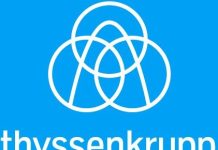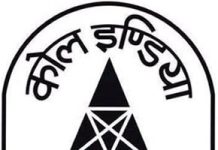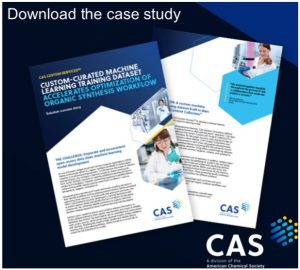Competition is rife in any sector of the industry today, whether it is in hydrocarbons or in downstream fine chemicals. Every industry is trying to maximise their productivity and profitability, as well as produce more with less. The challenges, increase the complexity of the plants in industries, such as oil & gas, refineries, petrochemicals, and fertilizers. Operational excellence, optimum plant health, process efficiencies, energy efficiencies, safety, troubleshooting have all become crucial for success in the marketplace.
Digital technologies, advanced computing and high-end software, data analytics and internet have all converged to provide powerful tools for operators in hydrocarbon and downstream chemical industries to deploy for achieving the above-stated objectives.
AspenTech is a leading company offering a suite of software solutions including modelling and simulations to arm the process operators with virtually all the tools required for any functional area in a process plant.
Chemical Industry Digest had a one-hour long interaction with Ron Beck, Director of Industry marketing, Energy at AspenTech on his recent trip to India. Along with Beck was Sunil Patil, Business Consulting Director, India of AspenTech.
Excerpts from the interview:
Chemical Industry Digest (CID): What is the story behind the name AspenTech? How did it come about?
Ron: To meet the challenges of the oil crisis in the 1970s, the US government roped in professors from MIT, other leading Universities, leading companies like Dow, DuPont, etc. to create computer models for coal gasification. This research project was named ASPEN –Advanced Simulation for Process Engineering, which became publicly available. Later a company was formed named ASPEN Technologies which started selling a better software version called AspenPlus. The founder of this company was Larry Evans from MIT, who was a genius in understanding industry needs. He decided to acquire and put together several software products, starting from dynamic simulation to a suite of products, that could solve business and industry problems. Larry had the vision to assemble all the pieces of software that existed and connect them together. The basic concept was based on models and data. As we evolved we would have a comprehensive set of models for all areas of oil & gas to chemical plants. We are still on this journey though now with tremendous amounts of data available, we are combining models with data analytics to offer advanced solutions for industry.
CID: What industries do you serve and which segment contributes the maximum to your revenue?
Ron: If you look at our business profile today, we serve three key industries. First of which, is the oil and gas industry, which includes upstream and refining. The other two industry groups include chemicals and engineering, which includes mostly engineering, procurement, and construction (EPC) companies. The rest would be spread into smaller segments such as electric power, mining, and pharma. Chemicals would include petrochemicals as well as fine chemicals. World’s two largest petrochemical companies, Dow Chemicals, and SABIC are both large users of our software and so are the two largest specialty chemical companies, Evonik and BASF.

Ron Beck, Director of Industry Marketing, Energy, at AspenTech has been responsible for marketing the Engineering & Construction sector, the Engineering product portfolio, Aspen Economic Evaluation and Aspen Basic Engineering software. Beck has well over two decades of experience in evangelizing software solutions to process industries and over a decade of experience in commercializing chemical engineering technology. He has authored papers on key industry topics and had presented at several public industry events. Beck is a graduate of Princeton University in New Jersey in the US.
CID: Is your R&D and main software development only in the US or elsewhere too?
Ron: Our main software development is in the US. We have software products that we have purchased from other companies too. We also have a software development centre in Shanghai. A lot of focus today on new generation users is on digital transformation, which is essentially making complex tools more usable and consumable to everybody in a company. For this, we made our softwares more usable. We have two layers to our software: the core models and then the usability layers. A lot of this usability development is done in Shanghai. Usability is more than user friendliness; it is making our new generation process simulation tools work on various platforms.
CID: Considering that you have a wide range of customers in different geographies, how do you address the challenge of customisation?
Ron: Customisation has evolved over the years. Earlier when we came up with a software we used to release multiple versions with extensions so that different customers could use it. Then later we came up with Application Programming Interfaces so that when we customise into a new version it won’t break what has already been running. We are also working with the National Institute of Standards & Technology (NIST), a US government research organisation to facilitate customisations. The biggest customisation area for chemical processes is the physical properties. NIST with whom we have an agreement collates all physical property data of various work done in research labs, using our software,
ASPEN Properties. Based on utilising all this we have built different systems based on end-use areas and functions. For chemicals we have AspenPlus software; for oil & gas, our system is Aspen HYSYS software. We have also integrated the two products, so both the chemical and
oil & gas industries can use them. We have also developed the Aspen Assay Manager functionality that can extend across different systems, mainly for oil companies. Our refinery planning systems software for chemicals and oil & gas can both access the same database. We have also tied up with the Italian oil company ENI – one of the largest oil companies, to obtain physical properties which as I said is the biggest area – that helps us in customisation.
We have built different systems based on end-
use areas and functions. For chemicals we
have AspenPlus software; for oil & gas, our
system is Aspen HYSYS software. We have also
integrated the two products, so both the chemical
and oil & gas industries can use them. We
have also developed the Aspen Assay Manager
functionality that can extend across different
systems, mainly for oil companies.
CID: We understand that process simulation is a major area for you?
Ron: Yes. Another major area we are in is process simulation, which has moved far beyond being used only for the design of plants due to the developments in powerful computing and software. Therefore, today’s simulation models are more robust, can also be used online. Simulation helps in providing solutions, like the one we have built for preheater trains – which is beginning to be popular in India. This preheater train simulation software is very important to address energy use and efficiencies. Another area to address is heat exchanger fouling. As you know heat exchangers get fouled and the efficiency of the process goes down. A huge decision in a refinery is how often to shut down a heat exchanger for cleaning. We provide such solutions.
CID: Many users get little intimidated working on sophisticated software. How do you address that?
Ron: We have a group who are working on 40 different solutions to give people simple models. Since orienting manpower to complex software is not easy, we have started guides, which is relatively easy for new engineers to build let’s say a preheat train for a refinery, which can be done without many years of experience. You see many people fear software like PINCH analysis, for instance. So, we try to make our software simpler and easy to handle. Our challenge is how to get people to use it. One of our big projects over the
years was first to try and simplify the user interface and secondly to make it same between different products. For example, if you have learnt to use our modelling software, then you can use our energy software easily as it isn’t a lot different. You don’t have to go and
learn a whole different system when it comes to using our different products. So, we have been innovating to make our solutions accessible to more and more people. We call this the democratisation of the tools. The other thing we did was to build complete integration between energy analysis, PINCH analysis and our process modelling tools. So, you can build the process model and run the pinch analysis without even having to know how to do PINCH.
CID: What about your operations in India?
Sunil: In India, we have our marketing office in Pune where we also do consult and providing services. We customise our offerings for the end user. In India particularly, we provide many solutions, beyond Aspen Plus software. One area where we do a lot of work in India is in energy management. Like Preheat train optimisation which is done typically using technology like PINCH analysis. We also offer solutions for plant utility optimisation. Where there are multiple boilers, steam turbines etc, it helps to decide what should be the efficiency of boilers, its capacity, how it should operate etc. It is both supply side as well as the demand-side optimisation. We have done this successfully at BPCL, Mumbai. We see many such opportunities not only in the public-sector refineries but also in private ones like Reliance and Essar. In these refineries, we are not only looking at energy but also solutions for safety, for integrations into petrochemicals, for further optimising feedstocks etc. The refinery sector has contributed the maximum to the growth of AspenTech in India. We collaborate with Indian educational institutes like IITs and even regional engineering colleges for various activities. We also have the university specific software.
Sunil Patil is the Director of Business Consulting for Engineering in Asia Pacific at AspenTech. Sunil manages a team of business consultants to support sales with a high level of client engagement. With more than 18 years of experience at AspenTech, he covers a broad range of industries, such as oil and gas, refining, chemicals, engineering, and construction, as well pharmaceuticals. He has a masters’ degree in chemical engineering from Shivaji University.
CID: Can your current generation of products work on older refineries/plants?
Ron: As you know in the US no one has built a new refinery in the past 30 years or so. Despite that, they are some of the heaviest users of our solutions. There is a lot of data in the new plants and in the old plants also there is more data than what people think. We got to figure out how to use them. When data is less like in older plants we can use models to calculate them and create data points. Our Aspen OnLine software can do this – which is an automated workflow. Where there are limited data points like in an old refinery and one needs to know some of the parameters of the working equipment like saying heat exchangers or compressors, we can run the model and calculate these parameters by running it on calibration mode. Once this data is available from the calibrated model, you can take the dataset and run it in ‘solution mode’. So, things like this can be done with every old
plant; the key is to figure out which places in the plant it is going to have an impact. So instead of trying to do this everywhere in the plant which may not be feasible, we can pick out the highest impact areas – like a certain reactor or a column or a preheat area – where there is some trouble or limitation to get the data points and offer it to operators. This helps even when you are trying to reconfigure a refinery, like in India where they are moving towards BSVI norms. AspenTech’s software solutions can be used to redesign some of the refineries/plants and reconfigure existing systems. We focus on trying to help people select the big impact areas where you can have a business benefit so that you can succeed in a reasonable time frame. The company should work on those areas which are challenging.
CID: What are your other offerings?
Ron: We do a lot of work in the predictive maintenance area using not just data coming off a pump (for instance) for vibration, but data coming out of the entire process to understand how the process is interacting with the equipment, to understand what really is causing the problem in the plant. This can give information well in advance, that the plant or equipment is being run the wrong way and that this is going to wear out the equipment unless the way of operating is changed. We have acquired a company, Mtell to combine their machine learning technology with our expertise with process models. Combining this we are already marketing a software for predictive maintenance. This software can tell you about 2 to 3 months ahead of time that there is a problem in an equipment, and not just 2 to 3 weeks ahead like in conventional software. This is because this software uses lot more sophisticated footprints in the data. We have already merged this software with our solution in column modelling area where we have a very sophisticated column model by taking all the data available from a column and feeding it into the model so that it provides much better insights on how to operate.
We do a lot of work in the predictive maintenance area using not just data coming off a pump (for instance) for vibration, but data coming out of the entire process to understand how the process is interacting with the equipment, to understand what really is causing the problem in the plant. This can give information well in advance, that the plant or equipment is being run the wrong way and that this is going to wear out the equipment unless the way of operating is changed.
CID: Do you also have software for biorefineries?
Sunil: The Aspen Plus software has modelling capabilities for biorefineries. The US Department of Energy has a lot of published information on various models that are open to the public in the biorefining area. A lot of their research used Aspen Plus software and they published the reference models. People can download them and use for advanced bioprocessing.
































